|
 |
| |
| molecule to cognition unit |
| |  |
| The long-term goal of this unit is to elucidate the molecular and synaptic bases of learning and memory and to establish how alterations in synaptic plasticity contribute to neurological and psychiatric disorders. This unit will study how genetic/molecular/synaptic/neuronal/localcircuit-level brain mechanisms enable cognitive faculties such as maze learning tasks and sensation by integrating neurometric techniques at different depths with psychometric techniques such as maze learning tasks and behavioral genetics. Bong-Kiun Kaang will lead this unit joined by Graham Collingridge, Min Zhuo, Sang Jeong Kim and Inah Lee. |
| |
| Bong-Kiun Kaang, Dept. of Biological Sciences, SNU HOMEPAGE |
| |
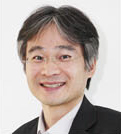 |
|
 One of the key leading neurobiologists in Korea with expertise on the molecular mechanism of synaptic plasticity and memory from multiple model systems such as Aplysia and mouse. One of the key leading neurobiologists in Korea with expertise on the molecular mechanism of synaptic plasticity and memory from multiple model systems such as Aplysia and mouse.
 His recent work on the molecular, cellular mechanism of synaptic plasticity and fear memory is providing a new view, unveiling novel, original molecular mechanisms of memory. His recent work on the molecular, cellular mechanism of synaptic plasticity and fear memory is providing a new view, unveiling novel, original molecular mechanisms of memory.
 High impact publications in Cell, Science, Neuron, PNAS. High impact publications in Cell, Science, Neuron, PNAS.
 Papers on the functional implication of cAMP-PKA-CREB signaling pathway in Aplysia neurons, in collaboration with Dr.Eric Kandel (year 2000 Nobel Laureate, also his lifelong collaborator), had a great impact on molecular neurobiology field (Neuron, 1993; Science, 1993). Papers on the functional implication of cAMP-PKA-CREB signaling pathway in Aplysia neurons, in collaboration with Dr.Eric Kandel (year 2000 Nobel Laureate, also his lifelong collaborator), had a great impact on molecular neurobiology field (Neuron, 1993; Science, 1993).
 Director of National Creative Research Initiative Center for memory; Editor-in-chief of on-line neuroscience journal, Molecular Brain. Director of National Creative Research Initiative Center for memory; Editor-in-chief of on-line neuroscience journal, Molecular Brain. |
| |
| Graham Leon Collingridge FRS, MRC Centre for Synaptic Plasticity, U of Bristol HOMEPAGE |
| |
 |
|
 Investigating the synaptic basis of learning and memory with an emphasis on the role of glutamate receptors in hippocampal long-term potentiation (LTP) and long-term depression (LTD). Investigating the synaptic basis of learning and memory with an emphasis on the role of glutamate receptors in hippocampal long-term potentiation (LTP) and long-term depression (LTD).
 He established the principle that NMDA receptors trigger plasticity and AMPA receptors mediate a modifiable synaptic response, and this principle has now been extended to many other synapses in the brain and is regarded as one of the most influential discoveries in the field of synaptic function. He established the principle that NMDA receptors trigger plasticity and AMPA receptors mediate a modifiable synaptic response, and this principle has now been extended to many other synapses in the brain and is regarded as one of the most influential discoveries in the field of synaptic function.
 Discovered that NMDA receptor-mediated synaptic transmission is plastic; synaptic plasticity is expressed by changes in AMPA receptor function; both inhibitory and facilitatory autoreceptor mechanisms contribute to the acute and long-term regulation of synaptic transmission. Discovered that NMDA receptor-mediated synaptic transmission is plastic; synaptic plasticity is expressed by changes in AMPA receptor function; both inhibitory and facilitatory autoreceptor mechanisms contribute to the acute and long-term regulation of synaptic transmission.
 High impact publications including Collingridge et al(1983, J of Physiology, over 1,500 citations) and Bliss & Collingridge (1993, Nature, over 5,000 citations). High impact publications including Collingridge et al(1983, J of Physiology, over 1,500 citations) and Bliss & Collingridge (1993, Nature, over 5,000 citations).
 Numerous prestigious awards including Elected Fellow, THe Royal Society (2001); Elected President, British Neuroscience Association (2007). The Santiago Grisolia Prize (2008). Numerous prestigious awards including Elected Fellow, THe Royal Society (2001); Elected President, British Neuroscience Association (2007). The Santiago Grisolia Prize (2008). |
| |
| Min Zhuo, Dept. of Physiology, U of Toronto HOMEPAGE |
| |
 |
|
 His lifelong works on the molecular mechanism of chronic pain and the role of ACC in chronic pain is highly creative and exceptional. His lifelong works on the molecular mechanism of chronic pain and the role of ACC in chronic pain is highly creative and exceptional.
 His original findings about the role of CNS on the generation of chronic pain sensation shed light on the field of chronic pain research. His original findings about the role of CNS on the generation of chronic pain sensation shed light on the field of chronic pain research.
 Expert on brain pharmacology and molecular mechanism of chronic pain (consulting experience with Big Pharmas such as Pfizer). Expert on brain pharmacology and molecular mechanism of chronic pain (consulting experience with Big Pharmas such as Pfizer).
 Having high-profile publication records (4 Nature, 3 Nature Neuroscience, 5 Neuronn, 1 Science, and total SCI 157 papers within 20 years of research). Having high-profile publication records (4 Nature, 3 Nature Neuroscience, 5 Neuronn, 1 Science, and total SCI 157 papers within 20 years of research).
 His research goal is to unravel the molecular mechanism of chronic pain and emotion-related brain disorders. His research goal is to unravel the molecular mechanism of chronic pain and emotion-related brain disorders.
 Founding editor and Editor-in-chief of online neuroscience journal Molecular Pain (Impact factor 4.13, top 20% among Neuroscience journals) and Molecular Brain. Founding editor and Editor-in-chief of online neuroscience journal Molecular Pain (Impact factor 4.13, top 20% among Neuroscience journals) and Molecular Brain.
|
| |
| Sang Jeong Kim, Dept. of Physiology, SNU College of Medicine HOMEPAGE |
| |
 |
|
 Research focus on the cellular and molecular mechanisms of information storage and its related brain diseases by combining cutting-edge techniques such as patch clamping, Ca imaging, confocal mocroscopy, UVphotolysis and field/single unit recording from isolated neurons, brain slices and in-vivo animals. Research focus on the cellular and molecular mechanisms of information storage and its related brain diseases by combining cutting-edge techniques such as patch clamping, Ca imaging, confocal mocroscopy, UVphotolysis and field/single unit recording from isolated neurons, brain slices and in-vivo animals.
 High impact publications in major journals such as Nature, Neuron, and Journal of Neuroscience, etc, making over 300 score of the total impact factor during last five years. High impact publications in major journals such as Nature, Neuron, and Journal of Neuroscience, etc, making over 300 score of the total impact factor during last five years.
 Published a comprehensive review article in Neuron suggesting that ubiquitous synaptic plasticity is necessary to account for the rich phenomenon of memory storage in the neural network. Published a comprehensive review article in Neuron suggesting that ubiquitous synaptic plasticity is necessary to account for the rich phenomenon of memory storage in the neural network.
 Editorial board of the Journal of Neurophysiology. Editorial board of the Journal of Neurophysiology. |
|
| |
| System and behavior unit |
| |
| The long-term goal of this unit is to understand neuronal mechanisms involved in the encoding of sensory inputs, the representation and decoding of relevan information from population of active neurons, and the maintenance and retrieval of information within thos populations. This unit will study how neuronal/local circuit/global circuit-level brain mechanisms enable cognitive processes such as sensation, perception, memory, decision making and attention; the aim is to integrate neurometric techniques including single/multi-unit cell recordings, micro/macro-brain imaging and brain stimulation with psychometric techniques encompassing various forms of perceptual and memory tasks. Computational approaches will play a major role in bridging studies from individual researchers with expertise using different types of measurement. Sang-Hun Lee will lead this unit teamed up with Randolph Blake, Inah Lee and Marcus Kaiser. |
| |
| Sang-Hun Lee, Dept. of Brain and Cognitive Science, SNU HOMEPAGE |
| |
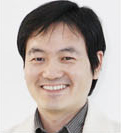 |
|
 The major goal of Dr. Lee’s research is to
understand the neuronal mechanisms involved in the encoding of sensory inputs and the representation and decoding of relevant information from populations of active neurons. The major goal of Dr. Lee’s research is to
understand the neuronal mechanisms involved in the encoding of sensory inputs and the representation and decoding of relevant information from populations of active neurons.
 His laboratory combines fMRI, computational modeling and psychophysics to address how sensory and non-sensory information flows in the human brain are combined to contribute to decisive resolutions of perceptual choices under an environment with high degrees of uncertainty. His laboratory combines fMRI, computational modeling and psychophysics to address how sensory and non-sensory information flows in the human brain are combined to contribute to decisive resolutions of perceptual choices under an environment with high degrees of uncertainty.
 High-impact publications in journals such as Nature, Science, Nature Neuroscience, PNAS and the Journal of Neuroscience. High-impact publications in journals such as Nature, Science, Nature Neuroscience, PNAS and the Journal of Neuroscience.
 Recent computational neuroimaging studies of cortical point spread functions, choice probability, motion adaptation and time perception in the human visual cortex have been published in top journals in the cognitive/systems neuroscience field. Recent computational neuroimaging studies of cortical point spread functions, choice probability, motion adaptation and time perception in the human visual cortex have been published in top journals in the cognitive/systems neuroscience field. |
| |
| Inah Lee, PhD, Dept. of Brain and Cognitive Sciences, SNU HOMEPAGE |
| |
 |
|
 The goals of Dr. Lee’s research are to elucidate how the brain learns a new event and retrieves an event memory effectively to produce adaptive behavior. Event memory under investigation includes object recognition memory, visual contextual memory, and object-place memory. The goals of Dr. Lee’s research are to elucidate how the brain learns a new event and retrieves an event memory effectively to produce adaptive behavior. Event memory under investigation includes object recognition memory, visual contextual memory, and object-place memory.
 His main techniques are to test rodents in memory tasks to uncover the functional relationships between brain areas and cognitive functions. Main techniques include perturbation techniques using drug injections and lesions. His lab also monitors the electrophysiological activities of a large number of single units simultaneously and local field potentials in freely moving animals. His main techniques are to test rodents in memory tasks to uncover the functional relationships between brain areas and cognitive functions. Main techniques include perturbation techniques using drug injections and lesions. His lab also monitors the electrophysiological activities of a large number of single units simultaneously and local field potentials in freely moving animals.
 He has published articles in high-impact journals such as Nature, Science, Nature Neuroscience, Neuron, and The Journal of Neuroscience. He has published articles in high-impact journals such as Nature, Science, Nature Neuroscience, Neuron, and The Journal of Neuroscience.
 Recent behavioral and neurophysiological studies for investigating neural networks (hippocampus, prefrontal cortex, striatum, and perirhinal cortex) pertaining to contextual choice behavior appeared in top-tier journals
related to systems of neuroscience. Recent behavioral and neurophysiological studies for investigating neural networks (hippocampus, prefrontal cortex, striatum, and perirhinal cortex) pertaining to contextual choice behavior appeared in top-tier journals
related to systems of neuroscience. |
| |
| Randolph Blake, Dept. of Psychology, Vanderbilt University HOMEPAGE |
| |
 |
|
 Studying important aspects of perception by blending psychophysics, neural modeling and brain imaging. Studying important aspects of perception by blending psychophysics, neural modeling and brain imaging.
 Acknowledged as a world expert on rivalry and perceptual bistability. Devised clever, revealing "psychoanatomical" strategies for identifying the neural sites of action within human vision. Acknowledged as a world expert on rivalry and perceptual bistability. Devised clever, revealing "psychoanatomical" strategies for identifying the neural sites of action within human vision.
 Dr. Blake's work on the role of the temporal structure in spatial grouping is highly original and has sparked keen interest in that topic. Dr. Blake's work on the role of the temporal structure in spatial grouping is highly original and has sparked keen interest in that topic.
 His 1989 Psychological Review paper on rivalry, the most widely cited theoretical paper on that topic, stimulated an explosion of interest in the phenomena within cognitive neuroscience and neurophysiology. His 1989 Psychological Review paper on rivalry, the most widely cited theoretical paper on that topic, stimulated an explosion of interest in the phenomena within cognitive neuroscience and neurophysiology.
 High-impact publications in Nature (13) and Science (9). His research impact factor is 61. High-impact publications in Nature (13) and Science (9). His research impact factor is 61.
 Coauthor of a widely used textbook on perception (Blake & Sekular, 2005, Perception, McGraw-Hill) now in its fifth edition. Coauthor of a widely used textbook on perception (Blake & Sekular, 2005, Perception, McGraw-Hill) now in its fifth edition.
 Numerous prestigious awards, including Elected Fellow, American Academy of Arts and Science 2006; Earl Sutherland Award, 2000; APA, Early Career Award, 1977; Thomas Jefferson Award, 2008; IgNobel Prize, 2006; National Academy of Sciences, 2012. Numerous prestigious awards, including Elected Fellow, American Academy of Arts and Science 2006; Earl Sutherland Award, 2000; APA, Early Career Award, 1977; Thomas Jefferson Award, 2008; IgNobel Prize, 2006; National Academy of Sciences, 2012. |
| |
| Marcus Kaiser, PhD, Complex Neural Systems, Newcastle University HOMEPAGE |
| |
 |
|
 His research interest is modeling network architecture and simulating neural activity as well as data analysis of
experimentally observed brain connectivity and neural dynamics. His research interest is modeling network architecture and simulating neural activity as well as data analysis of
experimentally observed brain connectivity and neural dynamics.
 High impact publications in journals such as Neuron, PLoS CB, Trends in Cognitive Sciences and Physical Review within 4 years. High impact publications in journals such as Neuron, PLoS CB, Trends in Cognitive Sciences and Physical Review within 4 years.
 The first to show that local spatial and topological features of cortical and neuronal networks can be used to reconstruct the global network topology. The first to show that local spatial and topological features of cortical and neuronal networks can be used to reconstruct the global network topology.
 The first to publish that cortical networks can show sustained activity that neither dies out nor spreads through the whole network even in the absence of inhibitory nodes. The first to publish that cortical networks can show sustained activity that neither dies out nor spreads through the whole network even in the absence of inhibitory nodes. |
|
| |
| clinical and computational unit |
| |
The long-term goal of this unit is to understand psychiatric disorders, with and eye toward identifying means for correcting thos disorders or minimizing their consequences. Furthermore, work carried out in this unit will promote development of computational and mathematical tools for handling neuroimaging data analyses which, in turn, will contribute to integrative evaluation of functional, structural and biochemical aspects of brain, both disordered and healthy. This unit, led by Jun Soo Kwon, consists of two subunits.
The 'Clinical Neuroscience' subunit, comprising Jun Soo Kwon and Sohee Park, will focus on studies of the pathophysiology of mental/brain disorders. including schizophrenia, depression, bipolar disorder and obsessive-compulsive disorder, they will deploy an integrative set of neurometric (large-scale brain imaging techniques on human brains) and psychometric (various forms of high cognitive tasks) measurement tools. The 'Computational Anatomy' subunit, led by the collaboration between Jae Sung Lee and Moo K. Chung, will integrate neurometric data obtained from functional (fMRI, PET) and structural (STI, MRI) images - major large-scale neurometric data from humans in modern cognitive neuroscience - into a single, coherent processing and analysis framework. The successful development of such tools will substantially help the other units to advance understanding of cortical and subcortical circuitries crucial for the target cognitive functions. |
| |
| Jun Soo Kwon, MD, PhD, Dept. of Psychiatry, SNU HOMEPAGE |
| |
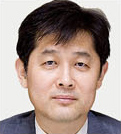 |
|
 An expert in pathophysiology in the neuropsychiatric disorders such as schizophrenia and obsessive-compulsive disorder. An expert in pathophysiology in the neuropsychiatric disorders such as schizophrenia and obsessive-compulsive disorder.
 Extensive publications in journals such as JAMA Psychiatry and Biological Psychiatry with a total impact factor score exceeding 180 over the last three years. Extensive publications in journals such as JAMA Psychiatry and Biological Psychiatry with a total impact factor score exceeding 180 over the last three years.
 Served as a counselor for Collegium Internationale Neuro-Psychopharmacologicum (CINP), a first for Korea (2008~2012). Served as a counselor for Collegium Internationale Neuro-Psychopharmacologicum (CINP), a first for Korea (2008~2012).
 Unit leader. Unit leader. |
| |
| Jae Sung Lee, PhD, Dept. of Nuclear Med. and Biomedical Sci., SNU HOMEPAGE |
| |
 |
|
 Research aim is to develop innovative tools to analyze biomedical image data. Research aim is to develop innovative tools to analyze biomedical image data.
 Developed novel gamma-ray detectors which allow PET images with very high resolution and sensitivity (IEEE TNS, 2008). Developed novel gamma-ray detectors which allow PET images with very high resolution and sensitivity (IEEE TNS, 2008).
 Developing an experimental system for truly simultaneous PET/MR imaging. Developing an experimental system for truly simultaneous PET/MR imaging.
 Recipients of Young Investigator's Award, Korean Society of Medical and Biological Eng./Nucl. Med./Human Brain Mapp.(2004) Recipients of Young Investigator's Award, Korean Society of Medical and Biological Eng./Nucl. Med./Human Brain Mapp.(2004) |
| |
| Moo K. Chung, Dept. of Biostatistics & Medical Informatics, U of Wisconsin-Madison HOMEPAGE |
| |
 |
|
 The algorithm and code presented in his 2005 NeuroImage paper is the most widely used cortical data smoothing technique at this moment. The algorithm and code presented in his 2005 NeuroImage paper is the most widely used cortical data smoothing technique at this moment.
 Chung's cortical surface data filtering technique has been the standard to be compared and to be validated against in the field. Chung's cortical surface data filtering technique has been the standard to be compared and to be validated against in the field.
 His 2001 NeuroImage paper on tensor-based morphometry was the first paper that shows the Jacobian determinant is the only meaningful metric in structural imaging. His 2001 NeuroImage paper on tensor-based morphometry was the first paper that shows the Jacobian determinant is the only meaningful metric in structural imaging. |
| |
| | Gene to Behavior unit |
| |
TBA
|
| |
| Seungbok Lee, Dept. of Brain and Cognitive Sciences, SNU HOMEPAGE |
| |
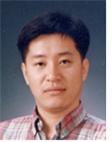 |
|
 The major goal of Dr Lee’s research is to understand the mechanisms by which the structure and function of neural circuits are controlled in development and disease. The major goal of Dr Lee’s research is to understand the mechanisms by which the structure and function of neural circuits are controlled in development and disease.
 His laboratory uses Drosophila as a genetic model system to address 1) how developing axons migrate towards their targets, 2) how synapses are formed and modified during development and by experience, and 3) how synapses are affected in neurological diseases. His laboratory uses Drosophila as a genetic model system to address 1) how developing axons migrate towards their targets, 2) how synapses are formed and modified during development and by experience, and 3) how synapses are affected in neurological diseases.
 High-impact publications in journals such as Neuron, the Journal of Cell Biology, the Journal of Neuroscience, and Development. High-impact publications in journals such as Neuron, the Journal of Cell Biology, the Journal of Neuroscience, and Development.
 Recent studies of the fly homologs of genes that cause hereditary spastic paraplegia in humans have shed new light on the pathologic mechanisms of neurodegenerative diseases. Recent studies of the fly homologs of genes that cause hereditary spastic paraplegia in humans have shed new light on the pathologic mechanisms of neurodegenerative diseases. |
| |
| Kyungjin Kim, Dept. of Brain and Cognitive Sciences, SNU HOMEPAGE |
| |
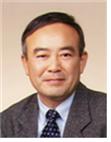 |
|
 Dr. Kim’s research topics include 1) mammalian biological clock mechanisms underlying circadian rhythms, 2) the synaptic plasticity of maternal stress in the hippocampus and amygdala, and 3) neuroendocrine mechanisms underlying the hypothalamic GnRH pulse generator. Dr. Kim’s research topics include 1) mammalian biological clock mechanisms underlying circadian rhythms, 2) the synaptic plasticity of maternal stress in the hippocampus and amygdala, and 3) neuroendocrine mechanisms underlying the hypothalamic GnRH pulse generator.
 Recently disclosed the circadian nature of glucocorticoid, one of the important circadian oscillators, and the genomic drive of the pulsatile GnRH oscillator in the hypothalamus. Recently disclosed the circadian nature of glucocorticoid, one of the important circadian oscillators, and the genomic drive of the pulsatile GnRH oscillator in the hypothalamus.
 High-impact publications including PNAS, EMBO Rpt, MCB, J. Neuroscience, Mol Endocrinology, and Frontiers in Neuroendocrinology. He has published more than 210 peer-reviewed original articles, reviews and invited chapters in books. High-impact publications including PNAS, EMBO Rpt, MCB, J. Neuroscience, Mol Endocrinology, and Frontiers in Neuroendocrinology. He has published more than 210 peer-reviewed original articles, reviews and invited chapters in books.
 Served on numerous society, business, and editorial board and committee review panels in government and private sectors. He was editor-in-chief of Mol Cells and an associate editor for Mol Reproduction & Development. He is currently an editorial board member for Frontiers in Neuroendocrinology, Progress in Neurobiology, Neuroendocrinology. Served on numerous society, business, and editorial board and committee review panels in government and private sectors. He was editor-in-chief of Mol Cells and an associate editor for Mol Reproduction & Development. He is currently an editorial board member for Frontiers in Neuroendocrinology, Progress in Neurobiology, Neuroendocrinology.
 Received numerous accolades, including the MokAm Bioscience Award from the Korean Society of Molecular and Cellular Biology (1997) and an award from the Korea National Academy of Science (2010). He has been a member of the Korean Academy of Science and Technology since 1999. Received numerous accolades, including the MokAm Bioscience Award from the Korean Society of Molecular and Cellular Biology (1997) and an award from the Korea National Academy of Science (2010). He has been a member of the Korean Academy of Science and Technology since 1999.
|
| |
| Seog Bae Oh, Dept. of Brain and Cognitive Sciences, SNU HOMEPAGE |
| |
 |
|
 Studying the neurobiological basis of neuropathic pain at the molecular, cellular and cognitive levels. Dr. Oh’s research aims to link specific gene targets to their effects on perceptual and emotional outcomes in the context of nerve injury-induced pain. Studying the neurobiological basis of neuropathic pain at the molecular, cellular and cognitive levels. Dr. Oh’s research aims to link specific gene targets to their effects on perceptual and emotional outcomes in the context of nerve injury-induced pain.
 Recently uncovered a hitherto unknown role of the TRPV1 receptor in mediating spinal disinhibition and mechanical pain behaviour after peripheral nerve injury and elucidated a mechanism supporting the effectiveness of centrally administered TRPV1 antagonist drugs in neuropathic pain. Recently uncovered a hitherto unknown role of the TRPV1 receptor in mediating spinal disinhibition and mechanical pain behaviour after peripheral nerve injury and elucidated a mechanism supporting the effectiveness of centrally administered TRPV1 antagonist drugs in neuropathic pain.
 High-impact publications including Neuron, the Journal of Neuroscience, Pain and the Journal of Biochemistry as well as reviews and invited chapters in pain-related publications. High-impact publications including Neuron, the Journal of Neuroscience, Pain and the Journal of Biochemistry as well as reviews and invited chapters in pain-related publications. |
| |
| | Clinical Cognitive Neuroscience unit |
| |
TBA
|
| |
| Chun Kee Chung, MD, PhD, Dept. of Neurosurgery, SNU HOMEPAGE |
| |
 |
|
 An expert in brain function and anatomy, Dr. Chung is the Chairman of the Department of Neurosurgery at the Seoul National University College of Medicine. An expert in brain function and anatomy, Dr. Chung is the Chairman of the Department of Neurosurgery at the Seoul National University College of Medicine.
 He installed an MEG system in Korea for the first time. He has annually hosted a workshop about neural data analysis with invitations to internationally renowned researchers. He installed an MEG system in Korea for the first time. He has annually hosted a workshop about neural data analysis with invitations to internationally renowned researchers.
 His research interests cover motor-sensory networks, pain, epilepsy, motor planning, movement intention decoding, the auditory system, and language with numerous papers published. His research interests cover motor-sensory networks, pain, epilepsy, motor planning, movement intention decoding, the auditory system, and language with numerous papers published. |
| |
| Ki Woong Kim, MD, PhD, Dept. of Psychiatry, SNU HOMEPAGE |
| |
 |
|
 Dr. Kim is an expert in geropsychiatry and serving as the director of the National Institute of Dementia and the president of the Korean Geriatric Psychoneuropharmacology (KCGP). Dr. Kim is an expert in geropsychiatry and serving as the director of the National Institute of Dementia and the president of the Korean Geriatric Psychoneuropharmacology (KCGP).
 His research areas are early diagnosis and intervention in cognitive disorders(dementia and mild cognitive impairment) and late-life depression. His research areas are early diagnosis and intervention in cognitive disorders(dementia and mild cognitive impairment) and late-life depression.
 He is leading two community-based elderly cohort projects in Korea (the Korean Longitudinal Study on Health and Aging and the Korean Longitudinal Study on Cognitive Aging and Dementia). He is leading two community-based elderly cohort projects in Korea (the Korean Longitudinal Study on Health and Aging and the Korean Longitudinal Study on Cognitive Aging and Dementia).
 Published more than 160 papers in peer-reviewed scientific journals, including Biological Psychiatry and Neurology and Stroke, and wrote 11 books on dementia and geriatric psychiatry. Published more than 160 papers in peer-reviewed scientific journals, including Biological Psychiatry and Neurology and Stroke, and wrote 11 books on dementia and geriatric psychiatry. |
| |
|
|